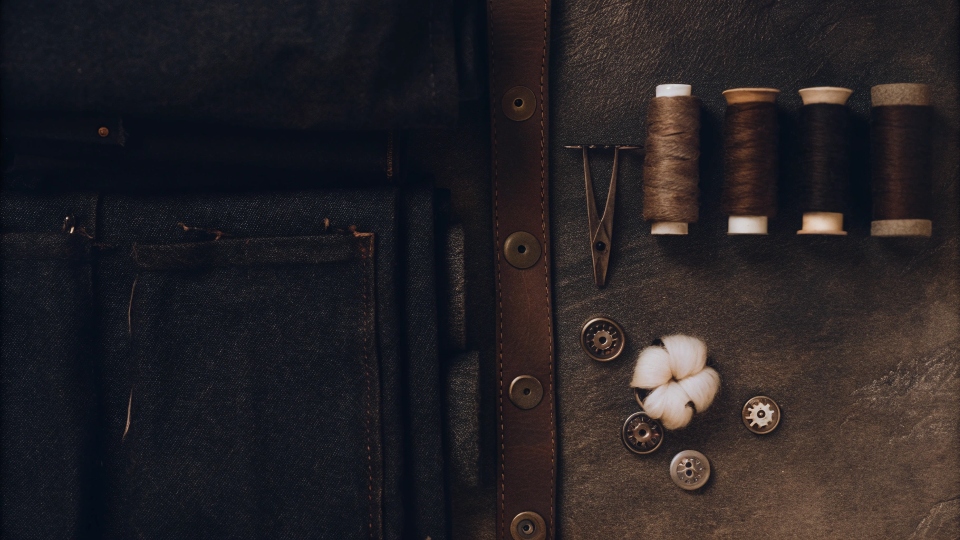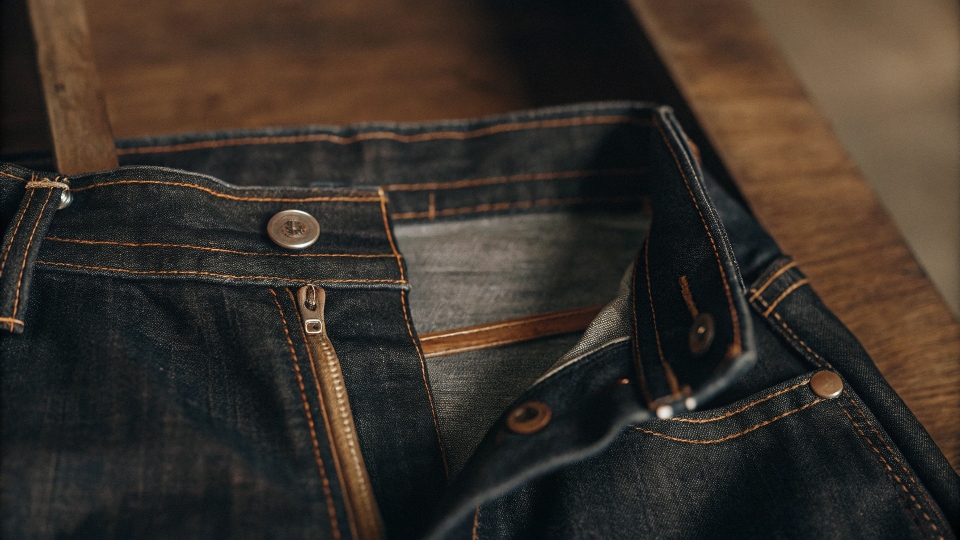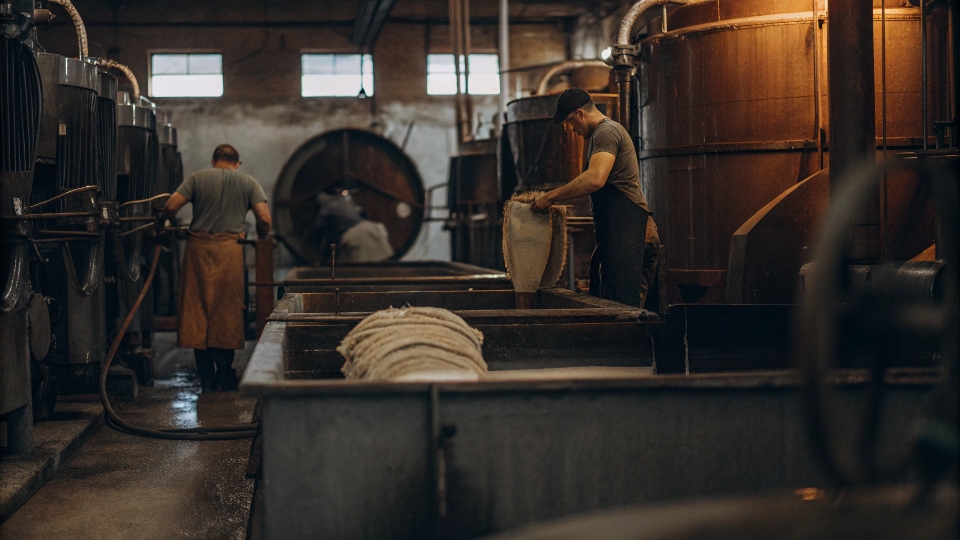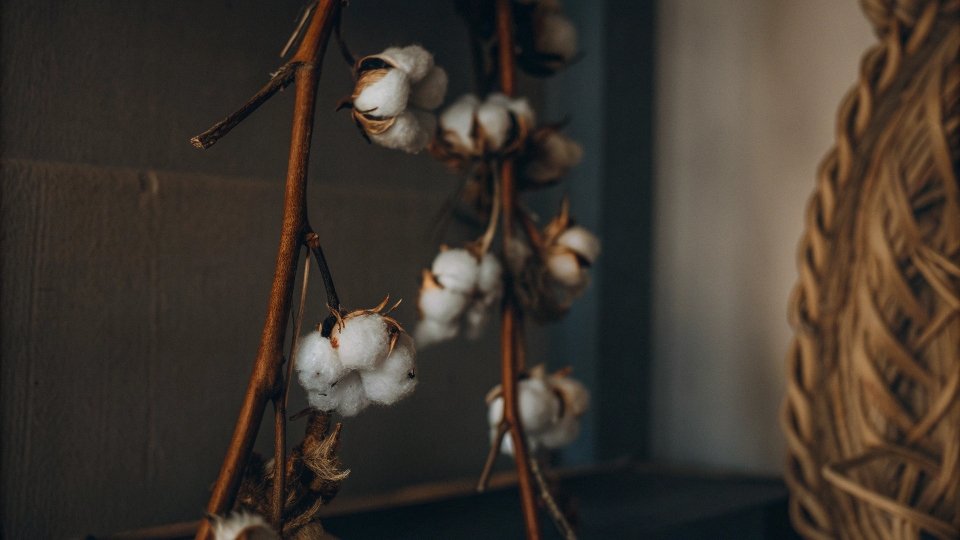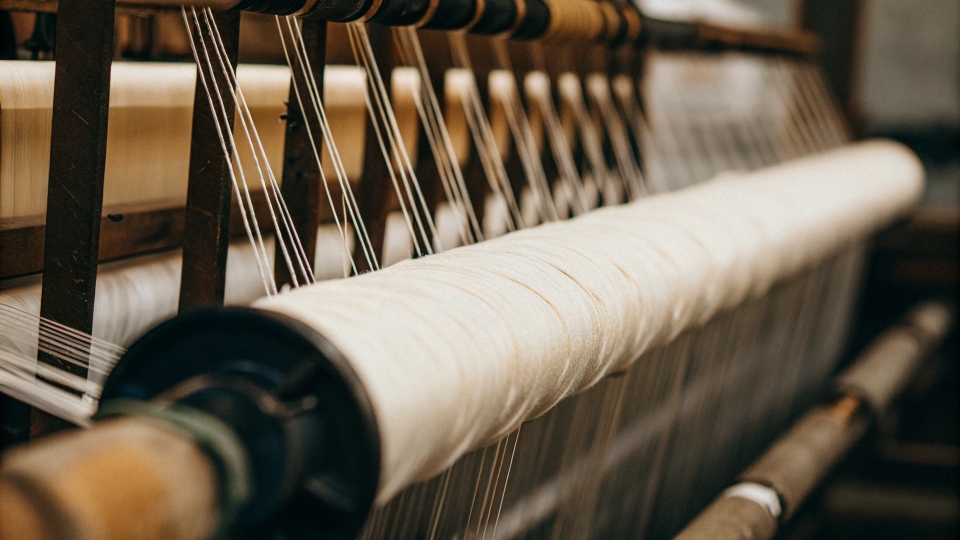You're designing a new jean line but feel unsure about the specific materials beyond just 'denim.' The small details can make or break your product's quality and cost.
The primary raw materials are cotton and indigo dye, which create the denim fabric. Key auxiliary materials include metal hardware like buttons and rivets, strong thread1, and pocket lining. Most modern jeans also add spandex for stretch.
Every day in my factory, I see these raw materials arrive at our loading dock. We get huge bales of raw cotton, barrels of indigo dye, and boxes filled with millions of buttons and rivets.
It's a simple list of ingredients, but how they are chosen and combined is what separates a cheap, disposable pair of jeans from a premium garment that lasts for a decade. A designer's vision only comes to life when the right materials are used. Let's break down exactly what those materials are.
What are the raw materials of denim jeans?
You know "denim" is the main material, but a complete pair of jeans has many other components. It is frustrating when you don't know what small parts make a jean truly high-quality or durable.
The raw materials for jeans fall into two main groups. The core material is the denim fabric itself, made from cotton, indigo, and often spandex. The auxiliary materials include thread, zippers, buttons, rivets, and labels.
Think of it like building a house. The denim fabric is the foundation and the walls—it's the main structure. But the house is not complete or functional without the nails, screws, windows, and doors. Those are the auxiliary materials.
In our factory, we spend as much time sourcing high-quality rivets as we do sourcing high-quality denim, because one failing part can ruin the entire garment.
For a designer like Dean, understanding both categories is essential for writing a complete technical specification. A cheap zipper can get a brand a lot of angry customer reviews, even if the denim fabric is amazing. Both parts have to work together to create a product that people will love and buy again.
| Category | Common Materials Used | Role and Importance in the Final Jean |
|---|---|---|
| Core Materials | Cotton, Indigo Dye, Spandex/Elastane | Forms the main body, color, and comfort of the jean. This is what the customer feels and sees first. |
| Auxiliary Materials | Metal Buttons, Zippers, Rivets, Polyester-Core Thread | Provide structure, function, and durability. These are the functional workhorse components. |
| Finishing Touches | Leather/Jacron Patches, Woven Labels, Pocket Lining | Communicate brand identity, care instructions, and add hidden comfort and quality. |
What resources are required to make jeans?
You have selected your materials, but the factory quote seems high. You might be overlooking the invisible resources that are essential to the manufacturing process, which directly impact your final cost.
Beyond physical materials, making jeans requires three critical resources: a huge amount of water for dyeing and washing, significant electrical energy to run machinery, and the skilled human labor of sewers and technicians.
When I calculate the cost of a production run for a client, the raw materials are only part of the equation. We have to account for the massive resources needed to turn those materials into finished jeans. The washhouse is the best example.
To get the specific faded look a designer wants, a single pair of jeans can go through multiple cycles of washing, treating, and drying. This uses a lot of water and the natural gas needed to heat the water and run the dryers.
Our factory has invested heavily in modern, water-saving machines and water recycling systems to reduce this impact, but it's still a major resource cost.
Then there is the electricity needed to run hundreds of sewing machines, cutting tables, presses, and conveyor belts for 10 hours a day. Finally, and most importantly, is the human skill. You cannot automate the process of sewing a complex pair of jeans.
It takes skilled operators, each specializing in a different part of the jean—like setting pockets or sewing the inseam—to construct the garment correctly. These three resources—water, energy, and labor—are just as critical as cotton and thread.
What is the main ingredient in jeans denim material?
You hear that all denim is made from cotton, but you see huge differences in quality. You want to understand what makes one cotton denim fabric feel soft and premium while another feels rough and cheap.
The undisputed main ingredient in jeans denim is cotton. It provides the essential combination of softness, strength, and breathability that defines denim. The quality of the denim is directly linked to the quality of the cotton fiber used.
Cotton is the soul of jeans. Nothing else feels quite a like it or ages as beautifully. Its natural fibers are soft against the skin, yet they are incredibly strong and resistant to tearing, which is why denim became famous as a workwear fabric.
It also breathes, which means it helps regulate temperature, making it comfortable to wear in different climates. But not all cotton is the same. The biggest factor in quality is something called "staple length2," which is the length of the individual cotton fibers.
Longer staple cotton, like Pima or Egyptian cotton, creates a smoother, stronger, and much softer yarn. This is what is used in most premium denim3. The longer fibers mean fewer weak points in the yarn, so the fabric is more durable and less likely to pill.
Shorter staple cotton is less expensive but produces a rougher, weaker yarn. As a manufacturer, I can immediately feel the difference.
For clients who want to create a truly top-tier product, my first recommendation is always to invest in a denim fabric woven from long-staple cotton. It is the foundation of everything else.
What material is used to make jeans?
You know jeans are primarily cotton, but you also know modern jeans stretch. You need to understand what other materials are used in the fabric itself to achieve the specific fit and look you want.
Besides cotton, the most important material in modern jeans is an elastic fiber like spandex, often known by the brand name Lycra. The iconic blue color comes from indigo dye, which is applied in a special way that makes jeans fade beautifully.
Today, very few jeans are made from 100% cotton. The rise of slim and skinny fits created a need for comfort and flexibility that pure cotton cannot provide.
That's where spandex comes in. We use what's called "core-spun" yarn, where tiny spandex filaments are wrapped in cotton fibers.
When this yarn is woven into denim, it gives the fabric the ability to stretch with the body and, crucially, to recover its original shape. Typically, stretch denim contains just 1% to 3% spandex. Any more than that and the fabric can lose its shape and feel less like authentic denim.
The other critical material is the indigo dye4. Indigo is unique because it doesn't fully penetrate the cotton yarn. We use a process called "ring dyeing5," where only the outer layer of the yarn is dyed blue, leaving the core white. This is the secret to why jeans fade the way they do. With wear and washing, the blue dye on the surface slowly chips away, revealing the white core underneath.
This is what creates the beautiful, personal wear patterns, like whiskers and honeycombs, that make a pair of jeans truly your own.
Conclusion
Jeans are more than just cotton. Their quality comes from a smart mix of cotton, stretch fibers, strong hardware, and authentic indigo dye, all assembled with skill and care.
-
Find out how strong thread contributes to the overall durability and longevity of jeans. ↩
-
Learn how staple length affects the softness and strength of cotton used in denim. ↩
-
Explore the characteristics that distinguish premium denim from lower-quality alternatives. ↩
-
Learn about the unique properties of indigo dye and its impact on the fading and aesthetics of jeans. ↩
-
Understand the unique dyeing process that creates the iconic fading patterns in jeans. ↩

